Disney’s Short Circuit – Director Roundtable Part Two
Short Circuit is the Walt Disney Animation Studio project that has allowed studio employees to share their ideas and turn them into short films, supported by the studio. In part one of our interview we sat down with four of the directors, Trent Correy, director of 2D/CG hybrid Drop; Jeff Gipson, the director of VR short Cycles; Jennifer Stratton who directed the musically driven Zenith and director of the graffiti inspired Downtown Kendra Vander Vliet, where we explored the process that went into making the Short Circuit films.
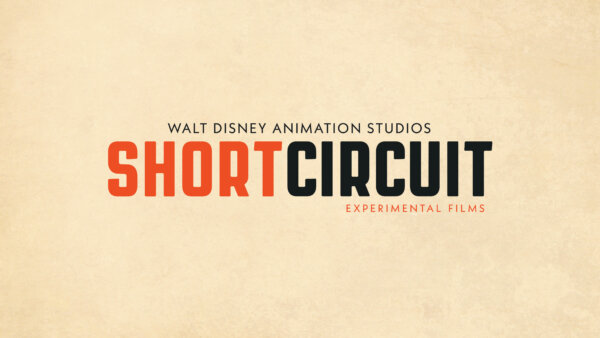
In part two of our interview we talk about the future for VR at Disney, and how the experience of directing a short at Disney has changed the aspirations of the directors involved.
Jeff, Maybe you could tell us through the process of deciding to create this shot in VR?
Jeff Gipson (Cycles) – Yeah, they’re kind of talked about earlier where there’s a character in that house and how do you really experience the house and kind of let it tell you a story and just kind of how can we place audiences in natural places. VR just seemed like a great kind of medium to do that. It’s great because there were people that were doing experiments in VR at the studio, but people come to you that are interested and want, you know, tough challenges. Fortunately, we work with so many great artists and technicians that love tough challenges. And some people would come and approach me and asked me “If I jump on the short can I help with real time rendersing, can I help with VR, I’m interested I don’t know anything”, but I didn’t know anything either at the time, so we just all jumped on and learn together.
Is Disney going to continue working with VR, are there other projects incoming?
Jeff – So I actually just finished directing my second VR short film at the studio, Myth a Frozen Tale. We created that with Frozen 2 in November. We showed it at Sundance and some other Film Festivals this year, and have some exciting news soon about how audiences will be able to view it. I think that there’s something so special about being able to share a film when you’re in theatre or you’re watching on Disney + you can be with your family watching it. VR at the moment is more of a kind of single experience – you watch it solo, but I think there’s potential for not only entertainment, but how we create our films.
I think that’s another kind of cool thing about the Short Circuit program is that there’s techniques used in the shorts, so whether it’s Drop or Downtown or Zenith or Cycles, they are now informing how we make our feature films. There’s a lot of VR tools that are taking apart technology, José Gomez created the technology we used to animate Gale on Frozen 2. When you’re an artist in VR, in Arrendale and drawing the movement and the flow of character it so cool, there are a lot of new innovations and discoveries in the Short Circuit program that are starting to inform how we create our feature films. Trent is actually you were one of the head animators right on the Gale on Frozen 2 and got to use it.
Trent Correy (Drop)– There was definitely a lot of crossover there which is super interesting. Like Jeff said José Gomez, who, you know, was one of the main guys for Jeff on Cycles, led the technology group for Gale as well. So, I mean, I think a lot of our films in short circuit find their ways into future productions.
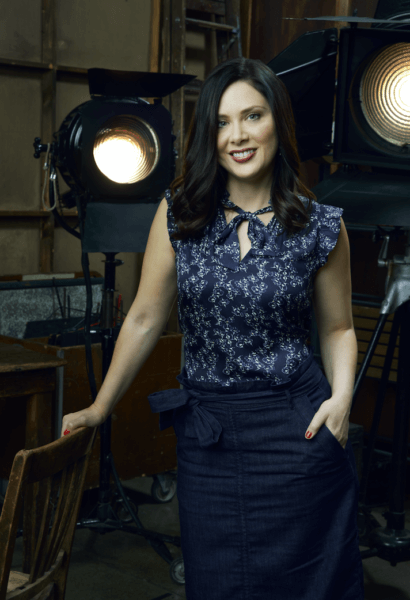
Jennifer Stratton – Director of Zenith
Jennifer, working on Zenith what were the biggest challenges in making the shot and making sure that it all worked together?
Jennifer Stratton (Zenith) – I think it was trying to communicate the style that I had pictured in my mind because it has a lot of negative space, it’s not traditionally how we design our characters. I am a development artist so I’m in charge of taking the model and giving it texture and surface colour – there’s actually no look development in in Zenith, the effects artists kind of took control of that! We created our characters and environments completely differently than how we normally do, so for the effects team, it gave them a really great opportunity to be in charge of that maybe a little more than what they normally are used to. Some of the biggest challenges definitely were the scale of the film. We built all of our characters to scale so the stag really is really tiny compared to the black hole and that was really challenging to work with in a 3D space, and there’s no ground plane, so it’s difficult to show the speed that the character is moving at, we had to use the environment to show that. I think it was just the style of the film itself kind of created some of the challenges we had to face. But it also gave it a unique look that we ended up with.
Now that you’ve directed a short for Disney what kind of future challenges does this leave open for you?
Jennifer – I think like Kendra mentioned I’m also more introverted. I had an amazing team and I was working with a lot of supervisors – really experienced people who I have a lot of respect for so it was kind of intimidating to start working with them and like all of a sudden, I’m the one that they’re coming to and saying, “what would you like for this” and having to be the one to make decisions, so it really did force me to step up. I think as a person at the studio I grew and maybe was able to step more in the spotlight now as well as it introduced me to so many people in the studio. I had so much exposure, and I think that it definitely gives the directors an opportunity. It’s like you have the microphone and you’re able to prove yourself so I think it really does open up a lot of opportunities for all of us.
What’s next for you?
Jennifer – In college, we have to come up with our own projects all the time. And I kind of got used to it as a professional working on other people’s ideas. So it really inspired me to keep coming up with my own ideas. And there are some other opportunities at work that we are pursuing. I think just looking for any other opportunities that will give us the chance to have our own voice again, as well as working with other artists at the studio with a lot of collaboration., I’ve had people come up to me and ask if I’d like to work with them and it’s also giving us a chance to give back to some of the artists who helped us on our projects. So I think creatively that’s where I see myself going is just wanting to pursue my own ideas and help other artists with theirs.
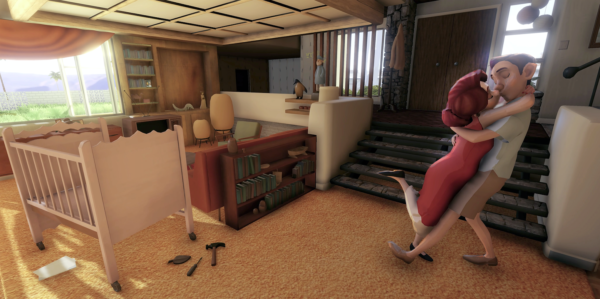
Cycles – Directed by Jeff Gipson
Jeff, you mentioned Myth A Frozen Tale is coming up. So we know that that’s coming next from you. But how did you grow as an artist working on Cycles?
Jeff – You start to gain a sense of confidence you’re sending from a simple perspective and kind of trusting your gut, as well as that ability to communicate with a team and lead a team but also trust the team when there’s really tough challenges and figuring it out together. I think that’s one of the big takeaways from this experience. It’s cool too, because I think you know, as has gone through Cycles now with Myth we’re learning new ways of telling stories or how to use a new medium, and the way to bring audiences in, or even augmented reality. We did some augmented reality pieces for Cycles, as well as for Myth. And it’s cool to start exploring these new mediums and trying to figure out how do we tell characters? How do we tell stories? How do we have audiences interact with characters? That’s really exciting.
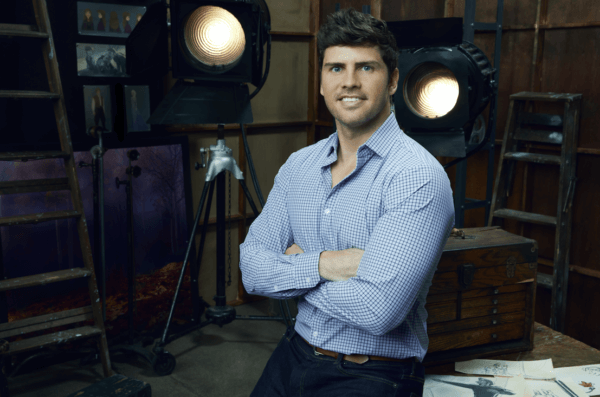
Trent Correy – Director of Drop
Trent, what did you learn working on Drop?
Trent – Yeah, I mean, I definitely echo everybody else. But for me personally on Drop, I mean, that was my first look at the kind of bigger picture of being part of the studio. We’re all in such specific departments that it’s nice to have an overview look of how our how our pipeline works, how and why things happen to get a better understanding on our films. Right up almost immediately after working on Drop. I got the role of an animation supervisor, on Frozen 2 and you know, thinking about this, I don’t think I would have been ready for that supervisor job without my experience on Drop because it really taught me to not only communicate and meet people around the studio and learn about other departments, but just why things happened in the pipeline. Then on a side note, just with Short Circuit in general, I’ve been at the studio eight years now. And I gotta say, there is such a surge in ideas right now. Like, the whole studio is so excited about creating these shorts. And I mean, when we used to walk down the halls months ago, I feel like all the time, people would say, hey, I’ve got this Short Circuit idea, do you want to meet up and chat about it? And I mean, that’s, that’s a huge difference over a couple years now there’s just this huge energy and surge of people wanting to be involved. So I think it’s not only changed me individually, but it’s kind of changed the studio because there is that new opportunity.
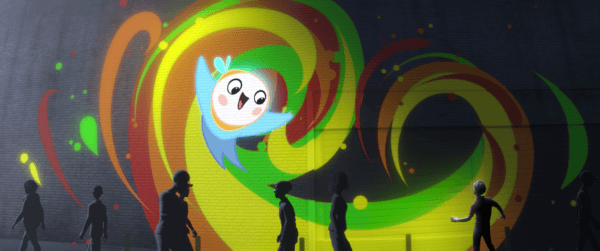
Downtown – Directed by Kendra Vander Vliet
And Kendra, have you found working on Downtown has altered your perspective and made you change as an artist as well?
Kendra Vander Vliet (Downtown) – Yeah, it made me more confident to try different kinds of techniques and how I shoot something on features now. I think Jeff was saying, trust your gut. Before I was doing work to maybe try to please my supervisors versus now I look at what I’m doing like, Okay, I need to please myself, and I found by doing that the directors and my supervisors respond better to the work that I do.
I’m finding now to explore cinematography within the work that I do and hopefully in the future, I can work on projects that want to tell stories with different kind of camera work. I’m always really inspired by what I see on streaming Disney +, Hulu and Netflix even, it’d be really great to kind of explore some of those individual filmmaker techniques and seeing what we could do with animation kind of in that same style.
You can view the films featured in this interview Cycles, Downtown, Drop and Zenith as well as the other films in the Short Circuit collection on Disney + now.

